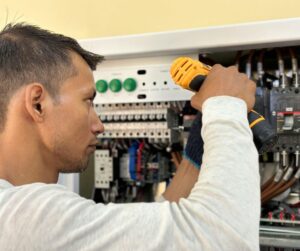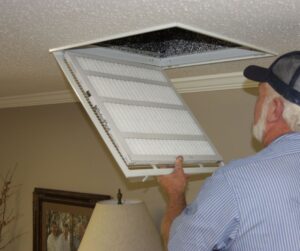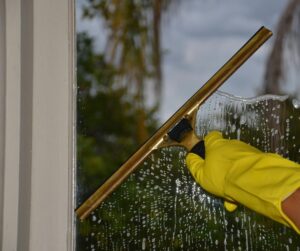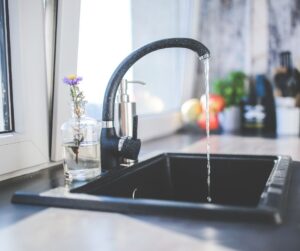
From Move‑In to Renewal: The Resident Experience Playbook That Cuts Maintenance Tickets
A great resident experience is not window dressing. It is one of the highest‑leverage ways to reduce avoidable maintenance tickets, drive renewals, and deliver steadier cash flow. The playbook below shows how to operationalize resident experience from day one, with simple standards, light automation, and clear education that pays off all year.
When residents can self‑serve routine needs, get timely updates, and trust the process, two things happen: fewer small issues escalate into emergencies, and people stay longer. Research on resident preferences points to three consistent drivers of renewals: digital self‑service, a smooth move‑in, and responsive communication standards. Treat these as operating requirements, not nice‑to‑haves.
A resident’s first week sets expectations for the entire lease. Aim for a quiet, frictionless move‑in that removes uncertainty.
Complete a “rent‑ready” tune‑up focusing on the first 30 days: door seals, garbage disposal reset, GFCI outlets, AC filter size on the grille, and labeled breaker panel
Confirm portal access, payment options, and maintenance request instructions in the welcome email
First‑day checklist in the unit
QR code to a short “How to” guide
Photo inventory links and condition reporting instructions with a clear 72‑hour window
Emergency vs non‑emergency contacts with response time expectations
The “first‑week fix” policy
Proactively invite residents to submit punch‑list items discovered after move‑in
Promise and meet a defined service level for non‑urgent items, for example “scheduled within 3 business days, completed within 7”
A brief, templated message asking if anything is unclear and reminding residents how to use the portal
The result is fewer “how do I” calls and fewer small annoyances turning into negative sentiment in month one.
Education beats escalation
Most avoidable tickets trace back to a handful of topics. Turn these into simple, visual micro‑guides in your portal and welcome packet.
Air filters and HVAC basics
Where to find the filter, correct size, when to replace, and why proper airflow prevents breakdowns
Tie to your filter delivery benefit if applicable
Bath fan use, squeegee tips for showers, and what to do if you see condensation or a slow drip
Food storage, cleaning routines, and safe at‑home remedies for ants and common kitchen pests
When to report issues that persist
Power and plumbing quick checks
GFCI reset, breaker panel basics, garbage disposal reset button, sink P‑trap clogs vs when to submit a request
Refrigerator coil cleaning, dishwasher filter rinse, laundry lint habit
Keep each guide one page with photos, plus a 60‑second video. Tag each guide in your portal’s knowledge base and link it in auto‑replies when relevant terms appear in a maintenance request. This combination reduces first‑time tickets and increases first‑contact resolution.
Prevention and compliance
Filter delivery reduces HVAC strain and energy costs
Renters insurance compliance reduces disputes and speeds incident handling
Convenience that builds trust
24/7 online maintenance reporting with clear triage
Credit building to reward on‑time payments
Communication standards baked in
Publish response time targets and proactively update residents while work is in progress
If you already include filter delivery, insurance, credit building, and 24/7 reporting, highlight how each benefit translates into fewer emergencies and faster resolutions in real life.
Define response and resolution targets by category, and publish them. Clarity defuses frustration and lowers repeat tickets.
Response attempt within 15 minutes
Dispatch within 1 hour when warranted
Acknowledge within 1 business hour
Schedule within 24 hours, resolve within 72 hours when parts are available
Acknowledge same business day
Schedule within 3 business days, complete within 7
Automate acknowledgments via your portal with friendly, plain‑language status updates. During vendor backlogs, send a brief daily update to keep expectations aligned.
Intake triage with education links
Auto‑reply includes a relevant micro‑guide and asks one clarifying question to speed diagnosis
Status updates at key milestones
Ticket created, vendor assigned, appointment window, parts ordered, completion
Short “Was this resolved?” prompt with a thumbs up or down
If down, reopen the ticket automatically with senior review
This approach prevents duplicate tickets and improves first‑contact resolution without adding manual work.
Track a small set of metrics that directly reflect experience and efficiency.
First‑contact resolution rate
Repeat ticket rate within 14 days
Average days to completion by category
Resident satisfaction after service and renewal intent at 60–90 days before lease end
Publish internal scorecards and review them weekly. Small improvements in these metrics compound into higher renewals and lower cost per door.
Start early and combine light unit tune‑ups with thoughtful outreach.
Send a status snapshot: on‑time payment streaks, completed work orders, and any open items you plan to address before renewal
Offer a quick “comfort tune‑up” for HVAC filters, door latches, and faucet aerators
Share renewal options and any value add, like upgraded LED lighting or a new smart thermostat
Personal check‑in with a property manager, inviting questions or requests that would make renewal easy
This cadence emphasizes care and predictability, two drivers of renewal intent.
Good intent must be matched with good process.
Apply education, SLAs, and communications uniformly across residents
Keep human review for decisions that affect tenancy status
Maintain clear data privacy practices for any automation or analytics
You do not need a full systems overhaul to start seeing benefits.
Publish your response time standards and emergency definitions
Create two micro‑guides with photos: HVAC filter and GFCI resets
Add auto‑replies in your portal linking to those guides
Insert the move‑in checklist and first‑week fix policy into your welcome packet
Set up a 5‑day post move‑in check‑in template
Build the after‑service “Was this resolved?” prompt and reopen workflow
Stand up a simple internal dashboard for time‑to‑first‑response and repeat ticket rate
Draft your 60‑day renewal cadence templates
Train your team on the triage script and when to attach education links
By week five, you should see fewer basic tickets, faster resolutions, and clearer sentiment in resident feedback.
Fewer avoidable calls means less vendor dispatch and lower overtime risk
Higher first‑contact resolution reduces repeat truck rolls
Better renewal intent cuts vacancy days and turn costs
Clear standards reduce back‑and‑forth time for your team
Even small gains here meaningfully improve NOI at the property and portfolio level.
Resident experience is not a slogan. It is the daily system that makes homes easier to live in and properties easier to own. Set simple standards. Teach the basics. Communicate proactively. Measure what matters. Do this consistently and you will earn calmer operations today and more renewals tomorrow.
At Real Property Management Prestige, this playbook is our operating system: rent‑ready move‑ins, clear SLAs, simple resident how‑tos, and 24/7 maintenance triage that prevent small issues from becoming big problems. Our Resident Benefits Package backs it up with filter delivery, renters insurance compliance, credit building, and online maintenance reporting, reducing avoidable tickets and speeding resolution for residents and owners alike. In Houston, we add hurricane readiness and post‑storm recovery processes, delivered with transparent pricing and service tiers for predictable performance and stronger renewals
We are pledged to the letter and spirit of U.S. policy for the
achievement of equal housing opportunity throughout the Nation. See
Equal Housing Opportunity Statement
for more information.
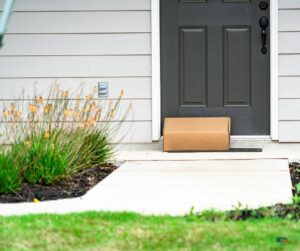 Resident Benefits Package in action
Resident Benefits Package in action


